
Here is our science plan for the school year. I specifically designed this plan to suit my children. Because my children are quite different I personalized the studies to match their learning styles. I have plans for both my children listed below. The DVDs, experiments, and activities are typically done together. Reading and the amount of material covered are individualized.
The older student is very interested in learning a lot of facts. He wants to absorb complex material, yet still likes kid-friendly books and activities. I have chosen books for him that will let him explore as much information as desired. The Encyclopedia of the Human Body and the Brain Book were not designed as kid’s books. They are made for adults and contain lots of information. At the same time they are full of pictures and drawings to interest a younger child. I went through many different books before I found ones to suit my son. Many of the books that contained more information also contained nudity which I don’t believe is appropriate for someone my son’s age. I checked into textbooks as well and found texts that didn’t offer enough information as well as informative ones that were quite dull looking. The living books route fits with my son the best right now.
The younger student is a creative and active soul. He learns visually and loves experiments and hands-on activities. I have chosen books for him that are appropriate for lower elementary students and have minimized his time sitting with a book. I am also incorporating notebooking into his study. He loves to draw so he will be looking at The Wonders of the Human Body and drawing pictures of different structures in the human body. The Wonders of the Human Body is a beautifully illustrated book with large pictures of different parts of the human body. I will have him draw pictures and label different parts and then place the picture into a special science notebook to save all his drawings. Many of the DVDs in this line-up are designed for older students. I have chosen to show them to both children because of my older son’s interest in details and information and my younger son’s visual learning style. I previewed the DVDs chosen and found my younger son interested in watching.
This study specifically covers cells, microlife, genetics, and an overview of the human body with an emphasis on the brain. This plan is supposed to take about 70-80 hours in total to complete for the older child and about 55-65 hours for the younger child. Since I put it together myself it is untested so the time frame is an estimate.
The book list for the older student is:
Encyclopedia of the Human Body
Microscopic Life (Kingfisher Knowledge)
Jonas Salk (Inventors and Creators)
The Human Brain Book
Simple Science Experiments With Optical Illusions
Louis Pasteur Disease Detective
Gregor Mendel: The Friar Who Grew Peas
The Usborne Introduction To Genes & DNA
Early Health and Medicine (Early Settler Life)
Ripley’s Human Body Believe It or Not
Younger student’s books:
I Know How My Cells Make Me Grow
First Human Body Encyclopedia
The Human Body (The Wonders Inside)
Microlife That Makes Us Ill
Simple Science Experiments With Optical Illusions
The Human Brain Book (for drawing picture only)
(for drawing picture only)
Gregor Mendel: The Friar Who Grew Peas
DVDs or Videos
The Magic School Bus Goes Cellular
Bill Nye the Science Guy : CELLS
Magic School Bus Inside Ralphie (Germs)
Bill Nye The Science Guy – Germs (DVD)
Understanding : VIRUSES [Discovery Channel School]
War Against Disease
Magic School Bus in a Pickle (Microbes)
Simple Organisms in Action : VIRUSES
In Search of the Polio Vaccine (History Channel)
Bill Nye the Science Guy: Bones and Muscles
Bill Nye the Science Guy: Brain
Journey Into Life/Human Life, Crown of Creation
Bill Nye the Science Guy: Eyeball
Bill Nye the Science Guy: Light and Color
Bill Nye the Science Guy: Light Optics 
Bill Nye the Science Guy: Sound
Bill Nye The Science Guy: Blood and Circulation
Magic School Bus Works Out Circulatory System
Bill Nye the Science Guy: Heart 
Louis Pasteur [Animated Hero Classics]
Magic School Bus for Lunch
Bill Nye The Science Guy: Digestion
National Geographic – In the Womb
Human Body for Children : All About the Human Life Cycle
Greatest Discoveries With Bill Nye: Medicine
Experiment books:
Microlife (Science Answers)
Light (Science Alive!)
Simple Science Experiments With Optical Illusions
The Science of Sound & Music
Sound (Science Alive!)
The Body: The Hands-on Approach to Science (Make it Work! Science)
Games
Somebody Board Game
Here you will find the chronological study. The amount of time spent each day can vary. If it works as planned it is about seventy 60 minute sessions for the older student and seventy 45 minute sessions for the younger student. I keep track of the time we spend in each subject so some days may not take as long as expected and other days will take longer. Hopefully, it will all even out at the end. I plan on reading to each child, but may have the older child do some of his own reading if he desires. Because they will have overlapping reading times they won’t always be doing science at the same time.
Older student
Younger student
CELLS
I Know How My Cells Make Me Grow by Kate Rowan
Bill Nye The Science Guy – Cells DVD
First Human Body Encyclopedia pg 4-11
Read Kingfisher Knowledge Microscopic Life pg 7-20
MICROLIFE
Kingfisher Knowledge Microscopic Life pg 21-25
Microlife That Makes Us Ill pg 4-9
Bacteria in Petri dish experiments
Bill Nye – Germs DVD
Kingfisher Knowledge Microscopic Life pg 26-33
Microlife that Makes Us Ill pg 10-17
Read Jonas Salk by Deanne Durrett pg 6-24
Draw a picture of a cell for notebook from Microlife by David Burnie
Does milk spoil faster in or out of the fridge experiment pg 15 Science Answers Microlife
Discovery school Understanding Viruses grade 6-12 good graphics, 1 hour DVD
Kingfisher Knowledge Microscopic Life pg 33-41
Microlife that Makes Us Ill pg 18-29
Jonas Salk by Deanne Durrett pg 25-44
Draw a picture of a virus for notebook from Microlife by David Burnie
Kingfisher Knowledge Microscopic Life pg 42-59
Draw a picture of bacteria for notebook from Microlife by David Burnie
Make a Mold Garden pg 17 Science Answers Microlife
War Against Disease DVD 52 minutes (has evolutionary content)
Simple organisims in action Viruses video grades 5-8 23 minutes DVD
In Search of the Polio Vaccine DVD 50 minutes
SKIN, HAIR, NAILS
Encyclopedia of the Human Body pg 34-41
First Human Body Encyclopedia pg 68-73
Picture of skin for notebook from The Wonders Inside the Human Body
Examine skin flakes and hair under microscope
Make a model of the skin using a Rice Krispie treat base and candy
PLAY SOMEBODY GAME
BONES
Encyclopedia of the Human Body pg 42-49
First Human Body Encyclopedia pg 12-17
Encyclopedia of the Human Body pg 50-57
First Human Body Encyclopedia pg 18-21
Skeleton Relay Race – They will have to put together a skeleton including the Cranium, mandible, cervical vertebrae, sternum, ribs, thoracic vertebrae, lumbar vertebrae, sacrum, clavicle, scapula, humerus, radius, ulna, carpals, metacarpals, phalanges, pelvis, femur, patella, tibia, fibula, tarsals, metatarsals, phalanges Will use eskeletons.org life size model to trace onto cardstock and cut out for game.
Play Pin the Bone on the Skeleton – Using card stock bones from relay.
Encyclopedia of the Human Body pg 58-61
First Human Body Encyclopedia pg 22-23
Skeleton picture for notebook from The Wonders Inside the Human Body
Skeleton Relay Race
Bill Nye – Bones and Muscles
MUSCLES
Encyclopedia of the Human Body pg 62-67
First Human Body Encyclopedia pg 24-29
Encyclopedia of the Human Body pg 70-73
Draw picture of muscles for notebook using The Wonders Inside the Human Body
Play SomeBody Game
BRAIN
The Brain Book by Rita Carter pg 38-45
First Human Body pg 30-33
Draw nervous system for notebook from The Wonders Inside the Human Body
The Brain Book by Rita Carter pg 52-57
Notebook picture on the brain from The Wonders Inside the Human Body
The Brain Book by Rita Carter pg 58-63
Nothing
Bill Nye Brain DVD 25 minutes
The Brain Book by Rita Carter pg 64-69
Nothing
Make brain model out of play doh
Human Life, Crown of Creation DVD about 40 minutes from Journey Into Life – talks about whole body but a little more on the brain
The Brain Book by Rita Carter Brain cells 68-73
Notebook picture of neuron and dendrites from The Brain Book
EYES
The Brain Book – Intro to senses and eye pg 76-81
First Human Body Encyclopedia pg 38-43
The Brain Book – Eye pg 82-87
Draw an eye for notebook from The Wonders Inside the Human Body
Bill Nye – Eyeball DVD
The Mystery of the Disappearing Coin (light reflection) Science Alive Light pg 9, Paint with Light (light and color) pg 13, Be a submarine captain (light reflection) pg 16 Science Alive Light.
Bill Nye Light and color
Read Simple Science Experiments with Optical Illusions and do activities
Bill Nye DVD Light Optics
EARS
The Brain Book Senses e88-93
First Human Body Encyclopedia pg 44-47
Draw picture of ear for notebook using The Wonders Inside the Human Body
Science Alive Sound – Transmission of sound activities – Ear on the table and spy telephone pg 8-9
Bill Nye DVD – Sound
Experiments from The Science of Sound and Music by Shar Levine and Leslie Johnstone pg 9 Clap your hands (creating sound waves), pg 11 Do the Wave (slinky demonstration of sound waves), I’m All Ears pg 27-28 (demonstrate function of outer ear)
Experiments from The Science of Sound and Music Beat of a Different Drummer pg 30-31 (demonstrate function of tympanic membrane), Balancing Act pg 35 (demonstrate function of inner ear) Glass Xylophone from Science Alive Sound pg 29
Play SomeBody Game
SMELL
The Brain Book by Rita Carter Senses smell 94-97
Senses smell First Human Body Encyclopedia pg 37
Notebook drawing on the nose from The Wonders Inside the Human Body
TASTE
The Brain Book by Rita Carter Senses taste 98-99
Senses taste First Human Body Encyclopedia pg 36
Notebook page on taste from The Wonders Inside the Human Body
TOUCH
Senses touch/proprioception 100-103
Senses touch First Human Body Encyclopedia pg 34-35
MOVEMENT
Movement The Brain Book 114-121
Create artwork for submission to neuroscience for kids
EMOTIONS
The Brain Book by Rita Carter Emotions and feelings 122-129 and the Social Brain pg 132-139
First Human Body Encyclopedia pg 116-117
LANGUAGE
The Brain Book Language and communication 142-151
First Human Body Encyclopedia pg 112-115
MEMORY
Memory The Brain Book by Rita Carter pg154-163
Nothing
Play SomeBody Game
ENDOCRINE SYSTEM
Encyclopedia of the Human Body pg 118-125
First Human Body Encyclopedia pg 58-59
CARDIO-VASCULAR SYSTEM
– Encyclopedia of the Human Body pg 126-139
First Human Body Encyclopedia pg 52-57
Draw blood vessels from wonders inside the Human Body
Blood and circulation Bill Nye
Blood Typing kit – Test blood type
Encyclopedia of the Human Body pg 140-151
First Human Body Encyclopedia pg 48-51
Picture of heart for notebook from The Wonders Inside the Human
Bill Nye DVD – Heart
Make working model of human heart from World Book Encyclopedia Body Make it Work! Hans-on Approach to Science pg 22-23
IMMUNE SYSTEM
Lymphatic and Immune System
Encyclopedia of the Human Body pg 152-157
First Human Body Encyclopedia pg 74-75
Draw picture lymphatic system from Wonders Inside the Human Body
Body defenses and Vaccinations
Encyclopedia of the Human Body pg 158-165
First Human Body Encyclopedia pg 76-81
Read Louis Pasteur Disease Detective by Michael Webb
Draw picture of Pasteur for notebook
The Animated Hero Classics – Louis Pasteur DVD
RESPIRATORY SYSTEM
Encyclopedia of the Human Body pg 166-177
First Human Body Encyclopedia pg 60-67
Lung capacity experiment from World Book Encyclopedia Body Make it Work! Hans-on Approach to Science pg 24-25
DIGESTIVE SYSTEM
Intro,Teeth, swallowing Encyclopedia of the Human Body pg 178-183
First Human Body Encyclopedia pg 82-86
Encyclopedia of the Human Body pg 184-189
First Human Body Encyclopedia pg 87-89
Bill Nye Digestion
Nutrition and vitamins
Encyclopedia of the Human Body pg 190-195
First Human Body Encyclopedia pg 106-108
Metabolism, Liver, Energy
Encyclopedia of the Human Body pg 196-201
Draw digestive system from The Wonders Inside the Human Body
URINARY SYSTEM
Intro, Kidneys, Bladder
Encyclopedia of the Human Body pg 202-209
First Human Body Encyclopedia pg 90-93
Experiment on purification from pg 31 from The World Book Encyclopedia Presents Body Make it Work The Hands-on Approach to Science.
REPRO-DUCTIVE SYSTEM
Intro, Pregnancy
Encyclopedia of the Human Body pg 212-213, 222-233
First Human Body Encyclopedia pg 94-99
In the Womb by National Geographic 89 minutes (nudity toward end of DVD)
Male and Female reproductive system
Encyclopedia of the Human Body pg 214-221
Draw picture of developing baby from The Usborne Introduction to Genes& DNA for notebook.
Growth – Life cycle
Encyclopedia of the Human Body pg 234-243
First Human Body Encyclopedia pg 100-105
Human Body for Children All About the Human Life Cycle k-4 level Overview of life cycle birth-childhood-puberty-adulthood 23 minutes DVD
Play SomeBody Game
GENETICS
Gregor Mendel the Friar who Grew Peas by Bardoe
The Usborne Introduction to Genes and DNA pg 4-7
The Usborne Introduction to Genes and DNA pg 8-13
The Usborne Introduction to Genes and DNA pg 14-19
The Usborne Introduction to Genes and DNA pg 20-23
The Usborne Introduction to Genes and DNA pg 26-31
HISTORY OF MEDICINE
Early Heath and Medicine pg 4-29
Draw picture of DNA from Usborne Introduction to Genes and DNA
Early Health and Medicine pg 30—62
Early Health and Medicine – entire book (picture descriptions only)
Greatest Discoveries with Bill Nye Medicine DVD
UNUSUAL FACTS RELATED TO THE BODY
Ripley’s Human Body Believe it or Not pg 4-25
Ripley’s Human Body Believe it or Not pg 26-45
In addition to a study of the human body we will cover Zoology, Botany, and insect studies.
For Zoology we plan to take five trips to the local zoo. We will also take a trip to the local African Lion Safari. On each trip we will take pictures of the different creatures. Upon return we will go over the pictures and write the names of the animals on the pictures using Picture It. At the end of the school year we will compile the pictures into a video with music.
For Botany in the Fall each child will choose flower seeds and plant some. Every 10 days each child will take a picture of his flower growth and document changes. In the Spring each child will choose vegetable seeds to grow. Every 10 days each child will take a picture of the growth and document changes.
For our insect studies we will be observing praying mantis development and the caterpillar/butterfly metamorphosis. In January we will receive praying mantis egg cases. Every 10 days pictures will be taken and each child will document changes. In May we will be observing caterpillars that will change into butterflies. Every 10 days pictures will be taken and each child will document changes.
After previous struggles to combine two very different boys for science, I think the plan this year will meet the needs of both of them for a pleasant and enjoyable learning environment for us all. I look forward to a fun year exploring science with my boys.
(for drawing picture only)

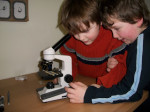

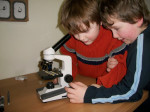
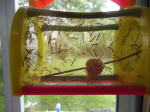
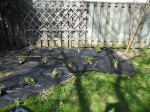
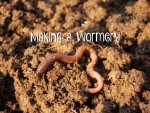
We used this in late middle early high school year. http://www.barnesandnoble.com/w/anatomy-coloring-book-wynn-kapit/1100841309?ean=9780805350869
I need to ask my daughter who is in nursing school now if that helped her at all. 🙂 I’ll probably use it for my last child in the next year or two.
Awesome! I can’t wait to see…….we’re doing Life Science next year for 1st grade.
Funny that you posted this now. That is exactly what I am working on tonight. We are almost finished with our human body study and we will be finishing the year on plants and animals. I hope to have it finished in a couple weeks. It will hopefully have lots of videos and nature studies. I’m going to be using the Essential Atlas of Botany for my plant spine and the Animal Kingdom series by Sally Morgan + for my animal spine.
This is amazing….thanks for posting this! Any chance you have a similar study for Plants and animals? I see you studied those this year….just wondered if you made a detailed unit study plans for those subjects like you did the human body. Thanks for the inspiration!